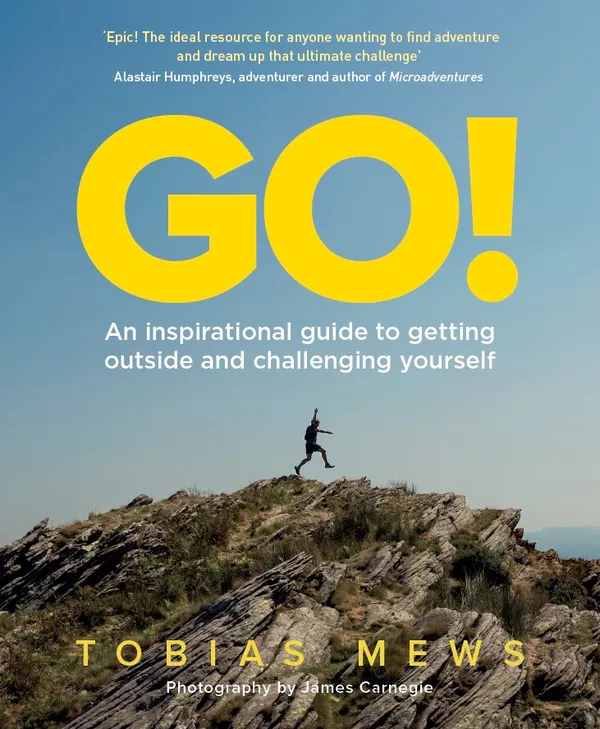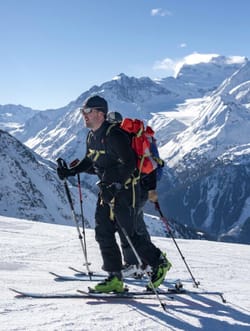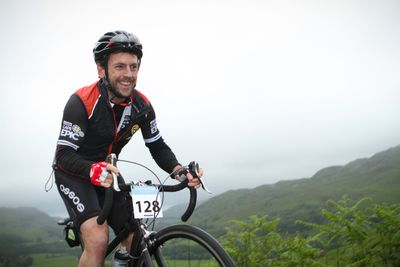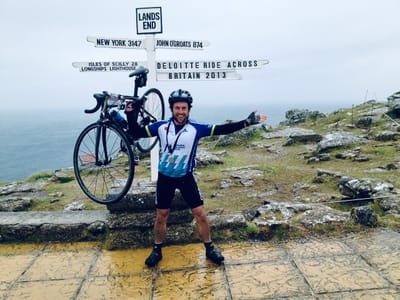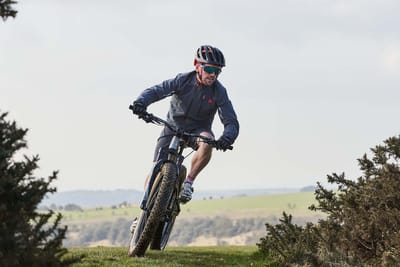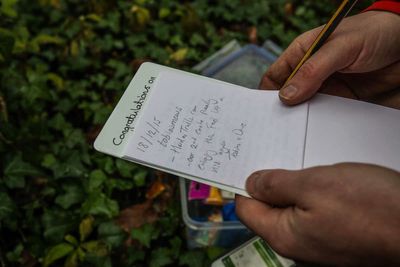Introduction
I love to race. From the nervous excitement I experience on the start line, followed by a rush of adrenaline as I step outside the boundaries of my self-imposed limitations, right through to those juicy endorphins as I reach the finish. I love the whole experience. And having completed more than 200 races of almost every distance and discipline across five continents, all described in my first book, 50 Races to Run Before You Die, it’s fair to say I’m addicted.
In the closing chapter of 50 Races, I describe a fell race: over the course of five days and virtually self-supported, I ran 200 miles across the mountainous spine of Wales, with nothing but a map and compass to guide me. I so enjoyed that feeling of autonomy, working out what route to take, the mixture of adrenaline and fear I experienced as I crawled along the treacherous Crib Goch, and then the feeling of arriving at the finish, set in the ruins of an ancient castle – and I wondered how I could top this. I had waited three years for the race, and if I wanted to repeat the experience, I would have to wait again.
Then it struck me: I didn’t have to wait. I didn’t need to worry about not getting a slot in a race before it sells out. I didn’t even need to enter another race to get that outdoor fix. I could simply organise my own challenge, as I had been doing on and off for over a decade. If a race is similar to going for a special meal in a restaurant, then what I needed to do for the other days of the week was to learn how to cook for myself. Ultimately, the preparation and planning of an adventure is half the fun.
And so began a personal quest to create a series of Race It Yourself challenges. Using the knowledge and skills I picked up from my time in the army, I began to analyse my environment, looking for lakes to swim in, mountains to run up, trains to race against or castles to cycle between. Rather than look for the easiest route, I’d look for the most difficult. Essentially, I was turning the ordinary into something extraordinary.
After moving my family from London to the French Pyrenees, I found myself not only entering the odd race, but also racing funiculars with my wife, creating SwimRun routes in the mountains, collecting cols to enter archaic French cycling clubs, bagging peaks, and even creating time trial routes between twinned towns. And in all of these endeavours, there were no entry fees to find. I just needed to grab a map and get outside.
The best way to think of this book is as a series of recipes for adventure – or templates for athletic challenges where, just like in a race, the emphasis is on performance. They’re not meant to replace organised races, but rather to complement them, allowing you in an act of spontaneity to get outside and challenge yourself.
Some of the ideas, like Everesting, are based on existing challenges. Others, like Extreme Twinning, I’ve created from scratch. But the one thing that binds them all is the fact that you can do these challenges anywhere in the world. And in most cases, at any time. And for that reason, the book has been divided up into three sections: Midweek Madness, Wacky Weekends and Long-Term Burners.
HOW TO USE THIS BOOK
The ten challenges you’ll find in Midweek Madness are ones that you can slip into your everyday routine. They’re designed to be fun and easy to plan but still take you out of your comfort zone. Some ideas, like racing a funicular, might take only a few minutes, whereas others, such as a Five to Nine adventure race, will see you racing up to 16 hours through the night.
But if you’re looking for something a bit more challenging, something that requires training and gives you those all-important bragging rights, then flip over to the Wacky Weekends section. This is where you’ll find athletic challenges that will push you further. You could be trying to run around a mountain before sunset, racing a mountain train, or creating your own Tri-It- Yourself triathlon.
And then there are the Long-Term Burners. These are challenges that you slowly tick off over time or do in your holidays. You might spend your weekends collecting cols with the aim of becoming an Officer of the Ordre des Cols Durs. At the other extreme, you might plan a week-long bikepacking expedition following a river from its source to sea.
STATS
As in a recipe book, the graphics at the top of each chapter give an overview of what’s involved: what type of challenge it is; how long it takes to research and prepare for (excluding the training required, because this is personal); how long it will take to complete, whether it’s good to do with friends/family; and how difficult it is. Moreover, because we live in a social media age where we’re defined by hashtags, I’ve provided one to use when sharing your challenge.
KIT
I’ve also provided a rudimentary kit list. As I don’t want to teach you to suck eggs – like suggesting you bring a puncture repair kit for a bikepacking adventure – it’s not exhaustive. Moreover, a lot depends upon the weather, climate and the nature of the terrain. But you’ll quickly realise that most of what you need can be whittled down to a dozen or more essential bits of kit – from running shoes and a bike, to a map and GPS tracking device.
RULES
If you’ve ever harboured a desire to complete a Bob Graham Round, take on an Everesting challenge or set a Fastest Known Time on an historic national trail, there are always rules. And so, where possible I’ve given some guidelines for you to follow. But since these are templates for challenges you’ll create, it’s up to you to set the rules for others to follow.
BE SOCIAL
Just like going out for a meal, you should not necessarily do these challenges alone. Sitting down with a group of friends around your kitchen table, with a glass of wine as you pore over a map, trying to figure out how long it will take to run around an island in a day, all before the last flight home (see Day Flight Run, page 102) – those moments are precious. Or discovering more about your city by seeing how many commemorative plaques you can find within 60 minutes (see page 10). It’s so much more fun with friends.
And lastly, in each chapter I’ve included several examples to get you started as well as suggestions of similar challenges that you might like. There are loads more options, which you’ll find on www.hardastrails.com.
So grab some mates, pick an adventure, buy a map, get outside and start challenging yourself. There is a world to explore. All you need is a pinch of imagination and a dash of courage.
BIKE
Choosing a bike can be an exciting process. But with so many different types, from full suspension mountain and gravel bikes to carbon road bikes and to oversized fat bikes, it can also be daunting. Sadly, there is no one bike that does them all, but a few get pretty close.
For bikepacking, many argue that the best bike is the one you have in your garage. The general consensus is: the less suspension, the less that can go wrong, but if that’s all you have, don’t let it stop you from using it. Where touring bikes are used for long-haul trips, laden with heavy panniers, here we’re more focused on ultra-lightweight cycle touring using bikepacking luggage such as seat bags that fit under your saddle, frame bags that distribute the weight, and handlebar bags useful for holding your sleeping bag or mat.
WETSUIT
If you’re not a fan of the cold, then a wetsuit is going to be your friend. You don’t necessarily need the most expensive, just make sure it’s a good fit and allows for decent movement in the water.
For a SwimRun, take an old wetsuit and cut off the legs at the knees and potentially the arms (from the elbow). If you do not already have one, buy one second- hand. A rash vest can also be a good investment. If you’re swimming in Alpine lakes or the sea, that extra layer can be a godsend.
GPS
The GPS device is one of the single most brilliant bits of technology ever invented. And although it has made navigation considerably easier, it shouldn’t replace your map. It’s simply an aid to help find your way.
There are two types that you’ll want to look at.
• For running
Use a GPS watch, such as a Suunto Ambit or Garmin Fenix. These have a long battery life.
• For cycling
A running watch will suffice for tracking. If you want mapping, then you’ll need a dedicated bike GPS.
RUNNING SHOES
Most of us have a pair of road shoes – which are what you’ll use for some of the challenges in the Midweek Madness section. But for most of the other challenges in the book, you’ll need to invest in a pair of trail shoes.
The type of shoe very much depends upon the terrain. For urban trail challenges like Hidden Waters or Day Flight Run, where you’ll be moving between the road and trail, you’ll need a hybrid trail shoe where the outsole isn’t too aggressive and provides enough cushioning.
But for a fastpacking challenge, you’ll need something a little more substantial. Lightweight, minimalist shoes won’t be ideal if you’re planning a multiday Hut to Hut challenge. Rather, look for a shoe that’s not too heavy, but robust enough to handle anything you chuck at it.
BACKPACK
The secret to choosing the right pack for your activity is to find one that’s just a tiny bit smaller than what you think you need. The less space you have, the less likely you are to try to carry the kitchen sink with you.
Many outdoor brands sell a running specific hydration pack, often equipped with soft lightweight flasks that slot into a pocket at the front or one with a bladder that sits along your back. These lightweight packs also have pockets designed for keys, food and a mobile phone, as well as a larger compartment (5–10 litres) at the rear for putting your essentials – a waterproof jacket, spare top, etc. These types of pack are ideal for many of the challenges in the Midweek Madness and Wacky Weekends sections.
But for longer, fastpacking-style, multi-stage challenges, like Hut to Hut or Peak to Peak, which can last up to a week or more, you’ll need something larger – closer to 15–25 litres. You’ll also need a dry bag to keep your kit protected from the elements.
PAPER MAPS
If there was one piece of kit, crucial to every activity in this book, it’s a paper map. They hold the key to adventure. The best maps are the 1:25,000, simply for the level of detail they give you, often highlighting routes that a 1:50,000 won’t show. But ultimately any map is better than no map, so make sure you always pack one, along with a compass.
FOOD
Your choice of food is going to be a personal one. But since we’re all about moving fast and light, think more along the lines of cereal bars, dried fruit and nuts, energy bars and gels. But don’t forget to use what’s available to you. There’s nothing stopping you from stocking up en route at supermarkets, cafés and restaurants.


